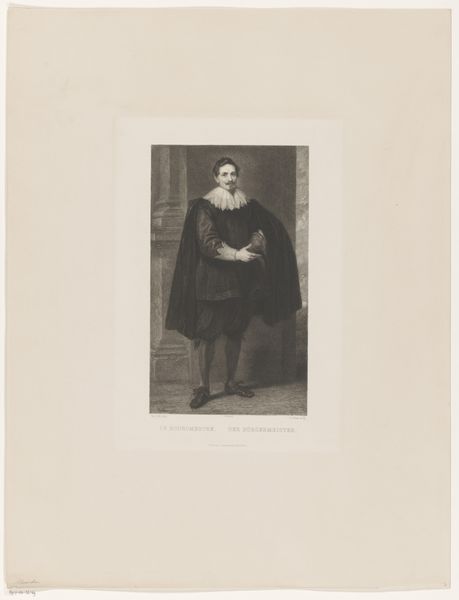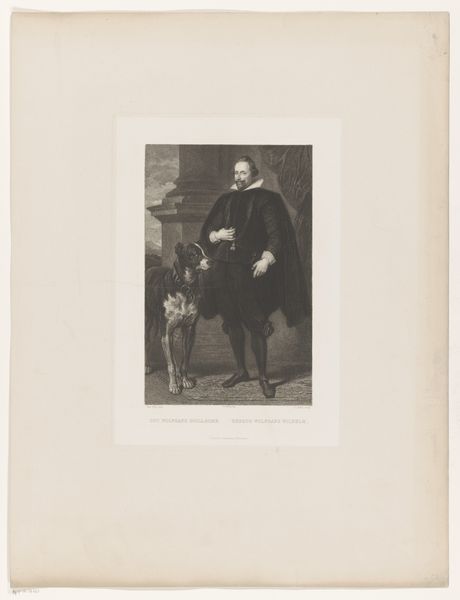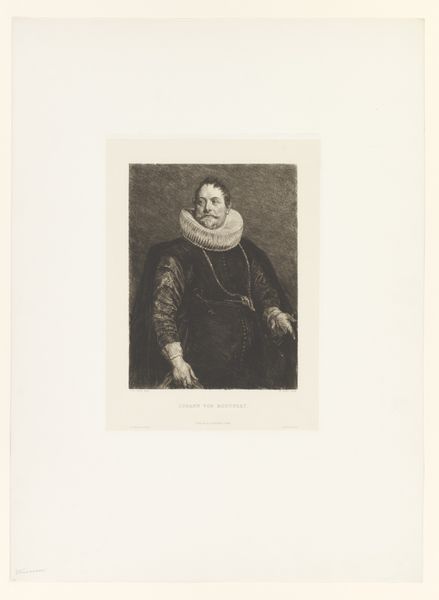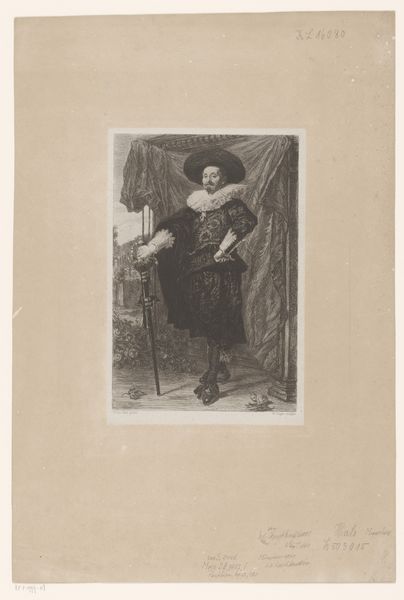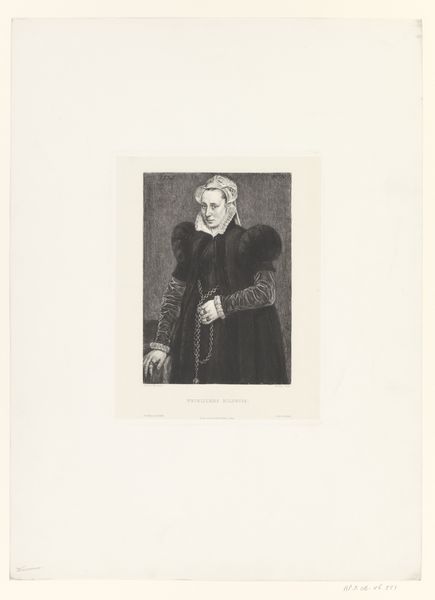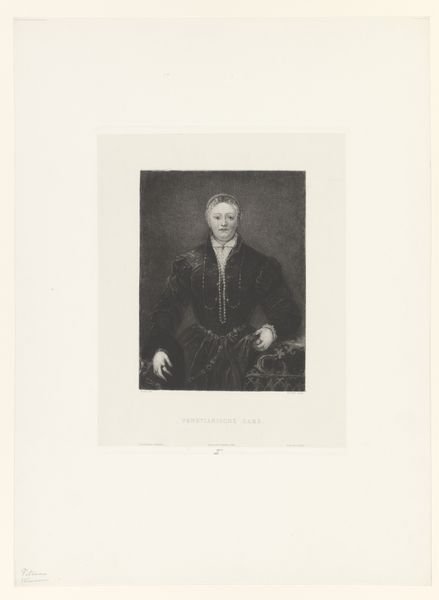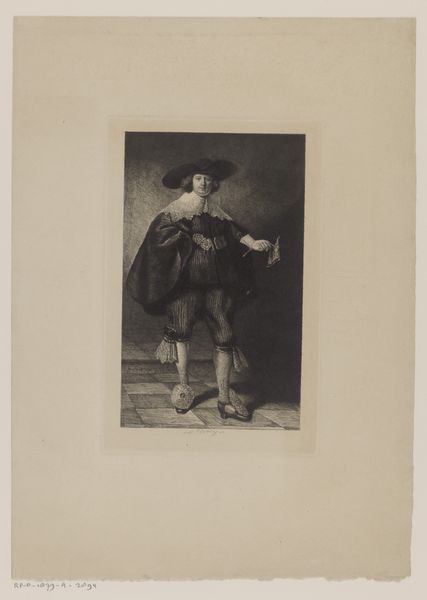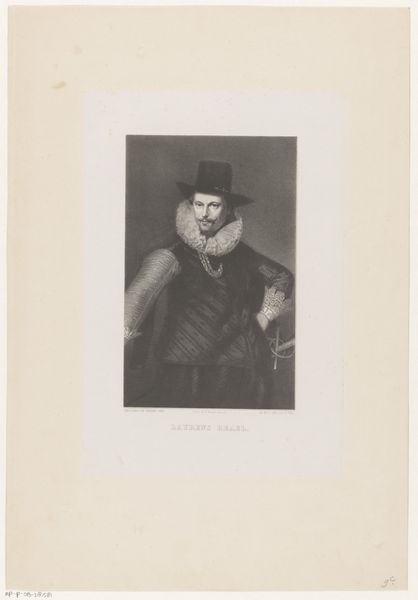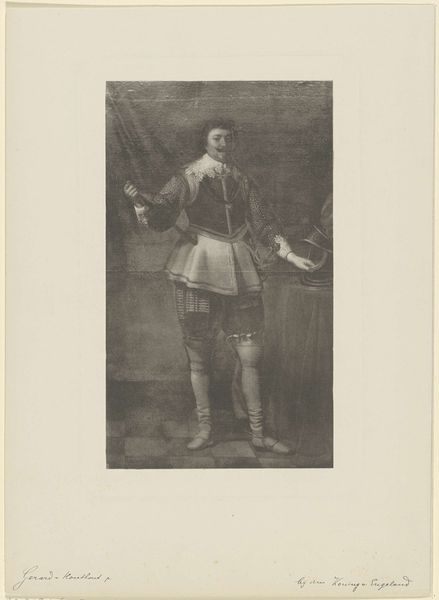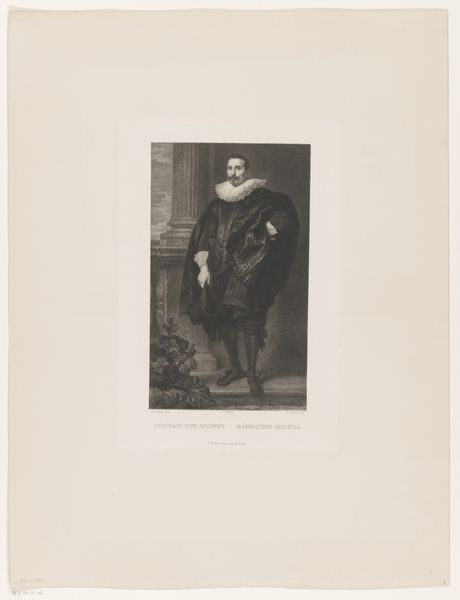
print, engraving
#
portrait
#
dutch-golden-age
# print
#
old engraving style
#
white palette
#
history-painting
#
engraving
#
realism
#
monochrome
Dimensions: height 216 mm, width 114 mm
Copyright: Rijks Museum: Open Domain
Curator: This print, dating back to the 19th century, captures Maurits, Prince of Orange. It's held here at the Rijksmuseum. Editor: Immediately, I see the stark monochrome—it conveys a certain gravitas. He stands tall, but there's also a sense of melancholy. Curator: That feeling probably stems from the gravure itself; we see a meticulous level of craft that’s intended to translate power and nobility across a more widely accessible format. Consider how prints like this were circulated; this image acts as reproducible, and thus, distributable, authority. Editor: I agree. The dark attire contrasting against the stark white ruff—classic symbols of status. And his gaze, unwavering... it speaks of responsibility and, perhaps, the burden of leadership. What can you tell us about Prince Maurits’s symbolism? Curator: The symbolism is complex, filtered through later perceptions. Here we find this Dutch Golden Age portrait is removed from its own time of social change and repurposed to perpetuate notions of historical power. It's presented as part of a tradition of valor, his sternness implying both strength and pious duty. Editor: So it's less about pure historical accuracy and more about crafting a narrative of authority. The symbols are carefully curated for impact. Curator: Precisely. In creating easily accessible printed iterations, Prince Maurits is rendered anew. This portrait extends and consolidates influence and assures us about existing historical powers. The making is always meaning. Editor: It truly offers much food for thought on the interplay between artistic choices and power, doesn't it? Curator: Indeed, an insight into how readily reproduced material things cement status into historical visual narratives.
Comments
No comments
Be the first to comment and join the conversation on the ultimate creative platform.
